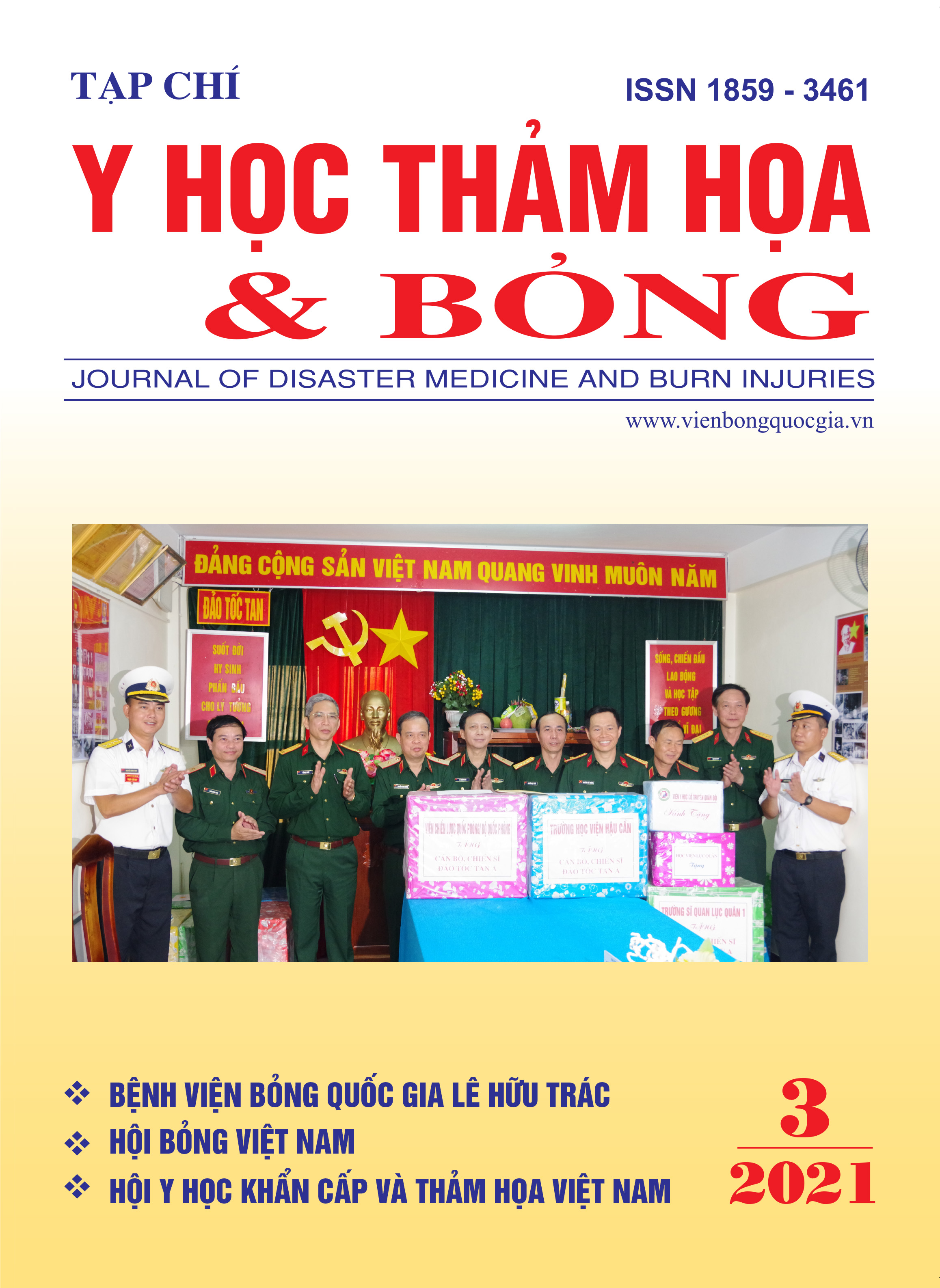Vai trò của Glycosaminoglycan và Hydroprolintrong liền vết thương
Nội dung chính của bài viết
Tóm tắt
Glycosaminoglycans (GAG) là các phân tử nền ngoại bào có vai trò quan trọng trong việc kiểm soát tất cả các giai đoạn LVT, chẳng hạn như chất trung gian hiệu quả của quá trình tạo mạch và viêm, thúc đẩy quá trình phục hồi vết thương bằng cách kích thích tạo mô hạt, tạo mạch và tái tạo biểu mô. GAG tham gia vào các tương tác giữa tế bào và chất nền tế bào, trong quá trình tăng sinh và di chuyển của tế bào, trong quá trình truyền tín hiệu cytokine và GF, do đó điều chỉnh cục bộ các hoạt động sinh học của chúng.
GAG đóng một vai trò quan trọng trong việc liên kết với các cytokine và các GF cần thiết cho sự phát triển của tế bào, cũng như có thể liên kết với một số lượng lớn các thụ thể trên bề mặt tế bào.
GAGs có vai trò điều hòa đa dạng trong việc tạo ECM, điều hòa proteinase, điều hòa tế bào thông qua tác động của các yếu tố tăng trưởng, cytokine, và các yếu tố phiên mã, và ức chế proteinase trong hệ thống đông máu / tiêu sợi huyết liên quan đến việc sửa chữa vết thương.
Hydroxyprolin là một thành phần chính của protein collagen. Hydroxyprolin và proline đóng vai trò quan trọng cho sự ổn định collagen. Trong collagen kinh điển, bộ ba XAA-Yaa-Gly, một proline chiếm vị trí Yaa hydroxy hóa để cung cấp cho một chuỗi XAA-Hyp-Gly. Điều này sửa đổi của dư lượng proline, tăng sự ổn định của collagen xoắn ba. Ban đầu nó đã được cho rằng sự ổn định là do các phân tử nước tạo thành một mạng lưới liên kết hydro liên kết các nhóm prolyl hydroxyl và nhóm cacbonyl chính chuỗi. Sau đó, sự gia tăng ổn định là chủ yếu thông qua các hiệu ứng stereoelectronic và hydrat hóa mà dư lượng hydroxyprolin cung cấp rất ít hoặc không có sự ổn định thêm.
Chi tiết bài viết
Tài liệu tham khảo
2. Stephan Barrientos; Olivera Stojadinovic, Michael S. Golinko, Harold Brem, Marjana Tomic-Canic (2008), Growth factors and cytokines in wound healing; Wound Repair and
RegenerationWound, (2008), 16, 585-601.
3. Sho Yamakawa & Kenji Hayashida. Advances in surgical applications of growth factors for wound healing; Burns & Trauma,volume 7,Article number: 10 (2019).
4. Cervelli V. (2010). “Tissue regeneration in loss of substance on the lower limbs through use of platelet-rich plasma, stem cells from adipose tissue, and hyaluronic acid”. Adv Skin Wound Care, 2010. 23(6): p. 262-72.
5. James Melrose (2016); Glycosaminoglycans in Wound Healing; SAGE journal, December 12, 2016 ; https://doi.org/10.4137/BTRI.S38670.
6. Jorge de la Torre Jorge. Phases of wound healing. Wound Healing. 2007;3:1-10.
7. Brian M. Sicari, Stephen F. Badylak (2014); Extracellular Matrix as a Bioscaffold for Tissue Engineering; in Tissue Engineering (Second Edition), 2014.
8. Shibnath Ghatak, Edward V. Maytin, Judith A. Mack, Vincent C. Hascall, Ilia Atanelishvili, Ricardo Moreno Rodriguez, Roger R. Markwald, and Suniti Misra (2015), Roles of Proteoglycans and Glycosaminoglycans in Wound Healing and Fibrosis;Volume 2015 |Article ID 834893 |https://doi.org/10.1155/2015/834893]
9. Juin-Hong Cherng; The Strategies of Natural Polysaccharide in Wound Healing; November 2018; DOI: 10.5772/intechopen.80812; In book: Wound Healing.
10. V. Salih, D. Thomas (2013); Fundamentals of cell and matrix biology for tissue engineering, in Standardisation in Cell and Tissue Engineering, 2013.
11. Philip Peplow (2005). Glycosaminoglycan: A candidate to stimulate the repair of chronic wounds; August 2005; Thrombosis and Haemostasis 94(1):4-16.
12. Hart J (2002); Inflammation. 1: Its role in the healing of acute wounds. J Wound Care. 2002 Jun; 11(6):205-9.
13. Guilherme F. Caetano, Marcio Fronza, Marcel N. Leite, Ary Gomes &Marco Andrey Cipriani Frade (2016); Comparison of collagen content in skin wounds evaluated by biochemical assay and by computer-aided histomorphometric analysis; Volume 54, 2016 - Issue 11.
14. Amit Kuma Srivastava, Piush Khare, Navdeep Raghuwanshi et al (2016); Hydroxyprolin: A Potential Biochemical Marker and Its Role in the Pathogenesis of Different
Diseases. Curr Protein Pept Sci. 2016; 17(6):596-602.
15. Brem H, Stojadinovic O, Diegelmann RF et al (2007). “Molecular markers in patients with chronic wounds to guide surgical debridement”, Mol Med 13: 30-39
16. Kowalewski, K.; Yong, S. Hydroxyprolin in healing dermal wounds of normal and hypothyroid rats. Acta. Endocrinol. (Copenh)., 1967, 54(1), 1-7.
17. Kumar R.; Katoch S.S.; Sharma S. β-Adrenoceptor agonist treatment reverses denervation atrophy with augmentation of collagen proliferation in denervated mice
gastrocnemius muscle. Indian. J. Exp. Biol., 2006, 44(5), 371-376.
18. Alamshah, S.M., A. Hemmati, and Z. Nazari, Assessment of Hydroxyproline Levels in NonIschemic Diabetic Foot Ulcers During Recovery. A Prospective Case-Control Study. Romanian Journal of Diabetes Nutrition and Metabolic Diseases, 2015. 22(4): p. 361-366.
19. George Han and Roger Ceilley (2017).“Chronic Wound Healing: A Review of Current Management and Treatments”. Adv Ther. 2017; 34(3): 599–610.
20. Robert Nunan, Harding K. G. and Martin P. (2014) “Clinical challenges of chronic wounds: searching for an optimal animal model to recapitulate their complexity”; Disease Models & Mechanisms 7, 1205-1213


